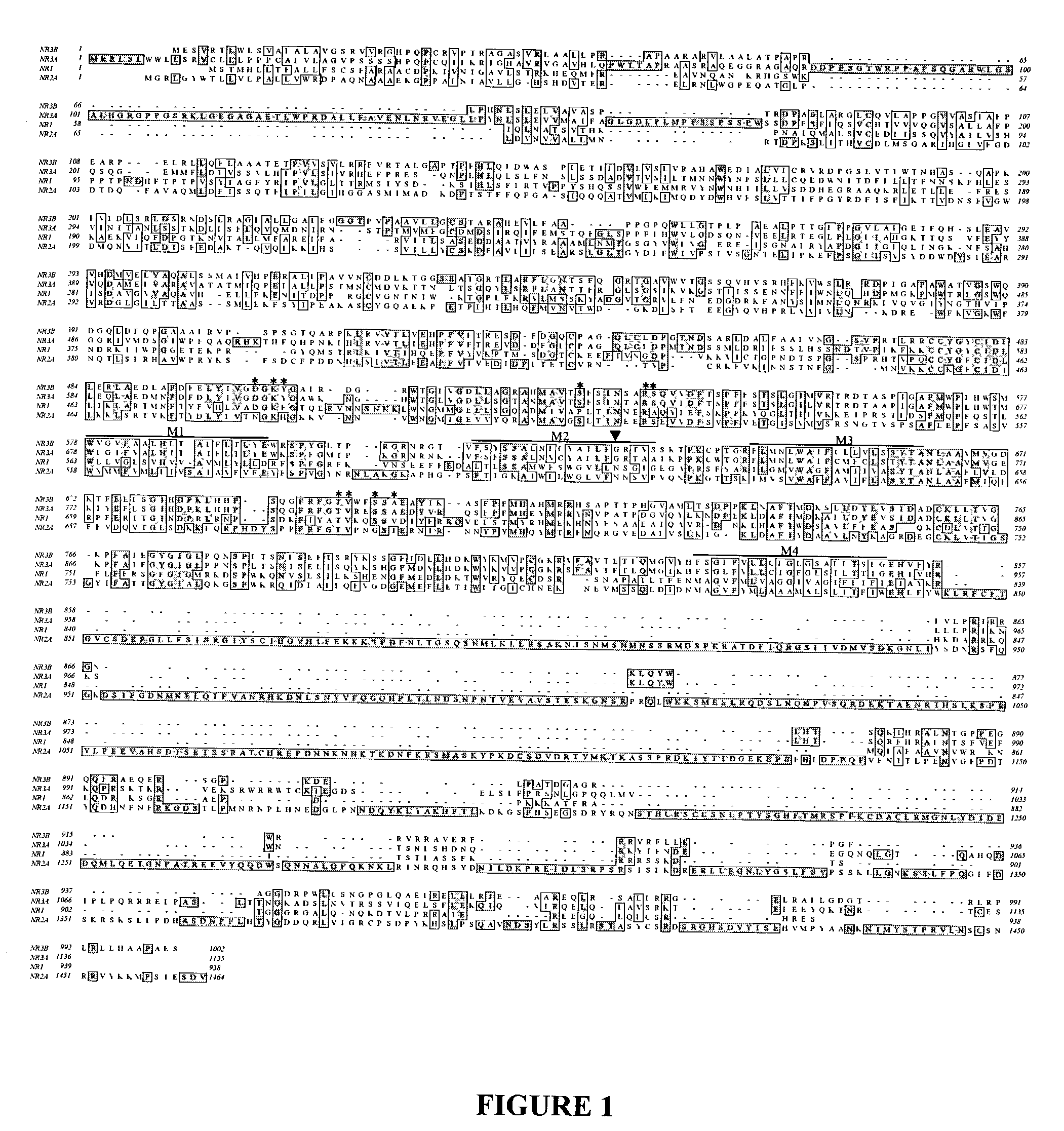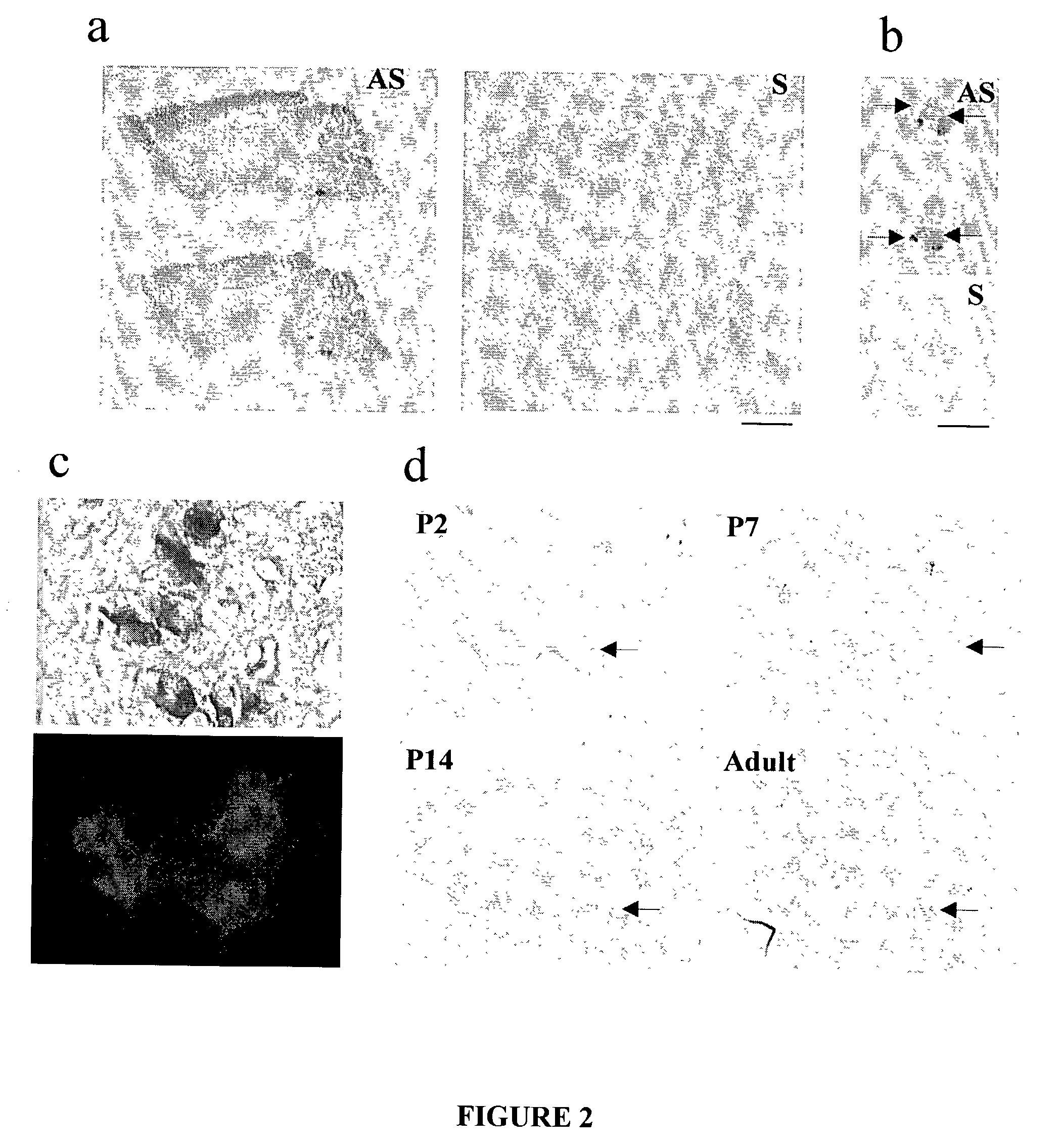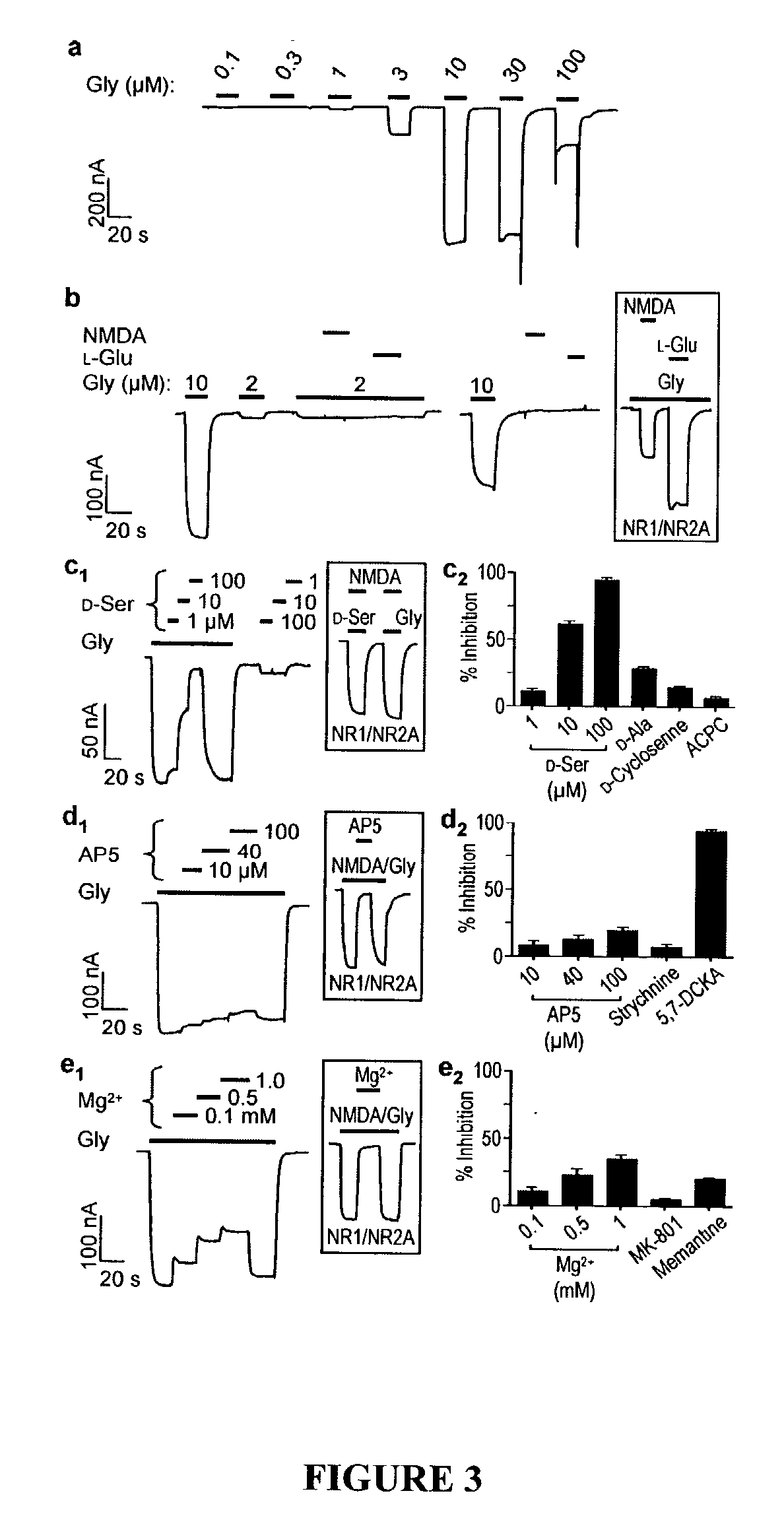Excitatory glycine receptors and methods
- Summary
- Abstract
- Description
- Claims
- Application Information
AI Technical Summary
Benefits of technology
Problems solved by technology
Method used
Image
Examples
example i
[0199] This example shows cloning and sequence analysis of NR3B.
[0200] Degenerate primers were designed based on the sequences of NR3A and other NMDAR family members. Using degenerate PCR in concert with homology screening of a rat brain cDNA library, two novel cDNA fragments (called 5-2 clone 1 and 5-2 clone 2) were obtained which exhibited significant sequence identity with NR3A, but clearly corresponded to a distinct and previously unidentified gene. The novel gene was therefore designated NR3B.
[0201] Based on the sequences of 5-2 clone 1 and 5-2 clone 2, two pairs of more specific, nested primers (f4, TGCTGCTATGGCTACTGCATC (SEQ ID NO: 17); r4, ATGACAGCAGCCAGGTTGGCCGT (SEQ ID NO: 18); f5, CACACATGGCTGTGACCAGC (SEQ ID NO: 19); and r5, AGAATGGCATAGCACAGGTTG (SEQ ID NO: 20)) were designed and used to PCR screen a Rapid-Screen rat brain cDNA library panel (OriGene Technologies, Inc., Rockville, Md.). Four independent partial NR3B cDNA clones were thus obtained. The coding regions of ...
example ii
[0207] This example shows analysis of the expression and localization of the NR3B subunit.
[0208] Initially, in situ hybridization was used to detect NR3B mRNA in adult rat brain. Three probes of approximately 400 bp were generated from different N-terminal and C-terminal regions of NR3B. These regions shared little sequence identity with other NMDAR subunits, including NR3A. All three probes detected NR3B signals in the initial experiment. The probe in the N-terminal region giving the strongest signal was chosen for subsequent experiments. .sup.33P-labeled antisense probes detected "hot spots" in the facial and trigeminal nuclei of the brainstem, and in the ventral horn of the spinal cord (FIGS. 2a, b). Subsequent use of non-isotopic (digoxigenin) labeled probes yielded signals of much higher resolution at the cellular level. NR3B was not detectable in most brain areas, including the cerebrocortex, thalamus, basal ganglia, and hippocampus. In contrast, the spinal cord and the brains...
example iii
[0210] This example shows characterization of biological activities of NR3B-containing and NR3A-containing excitatory glycine receptors.
[0211] NR3B cRNA for oocyte expression was produced as follows. The full-length NR3B cDNA was constructed in the pCMV6-XL4 vector (OriGene Technologies, Inc., Rockville, Md.), which contains a T7 promoter upstream of the cDNA insert. Initial attempts to generate an NR3B cRNA using T7 RNA polymerase resulted in the formation of both full-length and truncated species. The truncated cRNA could potentially encode a dominant negative form of NR3B. Therefore, a new vector was constructed to facilitate production of exclusively full-length NR3B cRNA. Construction of this vector proceeded as follows. NR1 cDNA was excised from the pGEM-HE / NR1 vector (a gift from S. F. Heinemann) by digestion with EcoRI and the two ends of the truncated pGEM-HE vector were re-ligated. The truncated pGEM-HE vector retained the 5' and 3' UTRs of the X. laevis .beta.-globin gene...
PUM
| Property | Measurement | Unit |
|---|---|---|
| Fraction | aaaaa | aaaaa |
| Magnetic field | aaaaa | aaaaa |
| Composition | aaaaa | aaaaa |
Abstract
Description
Claims
Application Information
 Login to View More
Login to View More - R&D
- Intellectual Property
- Life Sciences
- Materials
- Tech Scout
- Unparalleled Data Quality
- Higher Quality Content
- 60% Fewer Hallucinations
Browse by: Latest US Patents, China's latest patents, Technical Efficacy Thesaurus, Application Domain, Technology Topic, Popular Technical Reports.
© 2025 PatSnap. All rights reserved.Legal|Privacy policy|Modern Slavery Act Transparency Statement|Sitemap|About US| Contact US: help@patsnap.com



